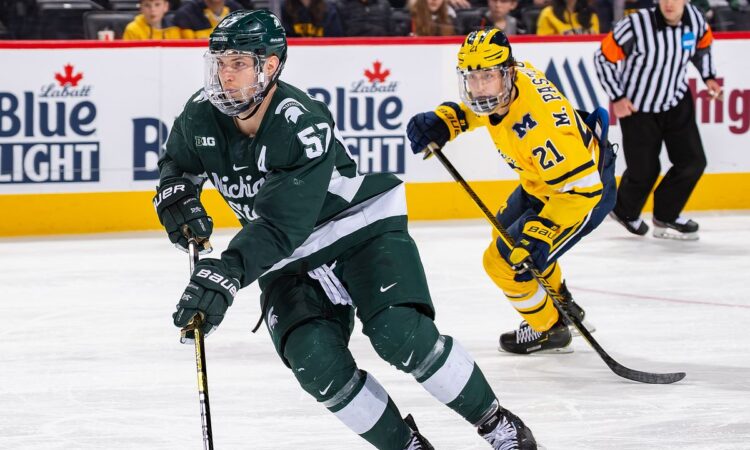Discover how many periods in hockey and why the sport is structured this way. Learn about intermissions, overtime rules, and variations across leagues in this comprehensive guide.
How Many Periods in Hockey? A Complete Guide to the Game’s Structure
Hockey is one of the most exciting sports globally, known for its fast-paced action, physicality, and strategic depth. For newcomers to the game, a common question arises: How many periods in hockey? Understanding the structure of a hockey game is vital for appreciating the strategies, intensity, and endurance required to succeed in this thrilling sport.
In this comprehensive guide, we’ll delve into how many periods in hockey, their purpose, and the historical reasons for this structure. Additionally, we’ll explore overtime rules, intermissions, and variations in game formats across leagues. By the end of this article, you’ll have a deep understanding of what makes hockey’s structure so unique.
How Many Periods in Hockey?
In most hockey games, there are three periods, each lasting 20 minutes of gameplay. The periods are separated by two intermissions, which are typically 15-20 minutes long. The clock stops during play for various reasons, including goals, penalties, or other stoppages, meaning that the total real-time duration of a hockey game is significantly longer than the 60 minutes of regulation play.
Here’s a breakdown of the periods:
- First Period: The opening period, where teams set the tone for the game.
- Second Period: Teams switch ends of the ice, bringing fresh dynamics to the game.
- Third Period: The final period of regulation time, often the most intense as teams push for a win.
If the score is tied at the end of the third period, the game proceeds to overtime, where sudden-death rules apply, and the first team to score wins.
Why Does Hockey Have Three Periods?
Hockey games weren’t always divided into three periods. Early versions of the sport featured two halves instead of three periods, similar to sports like soccer or basketball. However, this format led to several challenges:
- Player Fatigue: Hockey is an incredibly demanding sport, requiring players to skate at high speeds, engage in physical battles, and maintain focus throughout. Playing for long stretches without breaks caused players to tire quickly, reducing the quality of play.
- Ice Conditions: Before the invention of the Zamboni, ice surfaces deteriorated rapidly during play, leading to uneven conditions that affected the game’s flow and safety.
To address these issues, hockey adopted the three-period format, which offers several benefits:
- Player Rest: Intermissions give players time to recover, strategize, and rehydrate.
- Improved Ice Quality: The ice is resurfaced between periods, ensuring optimal conditions for gameplay.
- Enhanced Strategy: Coaches can use the breaks to make tactical adjustments and motivate their teams.
Today, the three-period format is universal across professional hockey leagues, international tournaments, and collegiate competitions.
What Happens During Intermissions?
The two intermissions in a hockey game serve crucial purposes for both players and fans. Each intermission typically lasts 15-20 minutes, providing time for:
- Ice Resurfacing: The Zamboni smooths and cleans the ice, eliminating rough patches and creating a fresh playing surface.
- Player Recovery: Players rest, rehydrate, and receive coaching during intermissions. It’s a chance to refocus and prepare for the next period.
- Strategic Adjustments: Coaches use this time to analyze the game’s progression, review plays, and make necessary tactical changes.
- Fan Engagement: During intermissions, fans enjoy entertainment such as contests, music, and analysis of the game.
These breaks enhance the overall experience of the game, ensuring that both players and spectators remain engaged and energized.
Overtime: What Happens If the Game Is Tied?
If a hockey game is tied after the three regulation periods, it enters overtime. The structure of overtime varies depending on the league or level of play:
- NHL Regular Season Overtime: A 5-minute sudden-death period is played with three skaters per team (3-on-3). If no one scores during overtime, the game proceeds to a shootout.
- NHL Playoffs: Overtime periods in the playoffs last 20 minutes and are played with full teams (5-on-5). The game continues with sudden-death periods until a goal is scored.
- Youth and Amateur Hockey: Overtime rules in these leagues vary widely. Some leagues allow ties, while others use shorter overtime periods or go straight to shootouts.
- International Hockey: In tournaments like the Olympics, overtime rules may include longer sudden-death periods or different player configurations, especially in medal games.
Overtime adds an extra layer of drama and excitement to hockey, as every moment becomes crucial, and one mistake or brilliant play can decide the outcome.
How Long Does a Hockey Game Last?
Although the regulation time for a hockey game is 60 minutes, the actual duration is much longer due to stoppages, intermissions, and overtime. On average, a hockey game lasts between 2.5 to 3 hours.
Here’s a breakdown:
- Regulation Time: 60 minutes (three 20-minute periods).
- Intermissions: Two breaks of 15-20 minutes each.
- Stoppages: Time added for goals, penalties, and other interruptions.
- Overtime and Shootouts: Additional time if the game is tied.
The combination of high-intensity gameplay and well-timed breaks ensures that hockey games remain engaging without overwhelming players or fans.
Variations in Period Structures Across Leagues
While the three-period format is standard in professional hockey, there are some variations in other leagues and levels:
- Youth Hockey: Periods are often shorter, such as 12 or 15 minutes, to accommodate younger players’ stamina.
- Recreational Leagues: Some leagues use running clocks or fewer periods to fit shorter schedules.
- International Games: International tournaments like the Olympics use the same three-period structure but may have unique overtime rules for high-stakes games.
These variations are tailored to the needs and circumstances of the players and competitions.
Michigan State Hockey: A Legacy of Excellence
Michigan State University (MSU) is home to one of the most celebrated collegiate hockey programs in the United States. Known for its competitive spirit, passionate fanbase, and rich history, Michigan State Hockey has consistently been a powerhouse in NCAA Division I hockey. Here’s an in-depth look at the Spartans’ hockey program, covering its history, achievements, facilities, and notable players.
The History of Michigan State Hockey
Michigan State Hockey was established in 1922, making it one of the oldest programs in the NCAA. However, it was in the mid-20th century that the Spartans began to solidify their reputation as a dominant force in collegiate hockey.
- Early Years:
The program officially became part of Michigan State’s athletic department in 1950 under Coach Harold Paulsen, marking the beginning of its modern era. - Championship Success:
Michigan State Hockey has won three NCAA Championships:- 1966: The Spartans claimed their first national title under Coach Amo Bessone.
- 1986: Led by legendary coach Ron Mason, Michigan State captured its second championship.
- 2007: The Spartans secured their third title with a dramatic win over Boston College.
- Big Ten Era:
Since the formation of the Big Ten Hockey Conference in 2013, Michigan State has faced fierce competition against rivals like Michigan, Minnesota, and Wisconsin.
Achievements and Accolades
Michigan State Hockey’s success extends beyond its national championships. The program has consistently been a top contender in collegiate hockey, achieving:
- 11 Frozen Four Appearances: Reaching the NCAA semifinals multiple times, showcasing their ability to compete at the highest level.
- 7 CCHA Championships: Before joining the Big Ten, Michigan State dominated the Central Collegiate Hockey Association (CCHA), winning numerous conference titles.
- NHL Pipeline: The program has produced several NHL stars, including:
- Ryan Miller: A Vezina Trophy winner and one of the greatest American goaltenders.
- Justin Abdelkader: Known for his long NHL career with the Detroit Red Wings.
- Torey Krug: A standout defenseman in the NHL.
Facilities: Munn Ice Arena
Michigan State Hockey plays its home games at the Munn Ice Arena, a state-of-the-art facility located on the MSU campus. Opened in 1974, the arena has a seating capacity of over 6,000 and is renowned for its electric atmosphere during Spartans games.
- Fan Experience:
Spartan fans are among the most passionate in college hockey, creating a vibrant and intimidating environment for visiting teams. - Upgrades and Renovations:
The Munn Ice Arena has undergone several renovations to maintain its status as one of the premier venues in collegiate hockey. Recent upgrades include improved locker rooms, video boards, and fan amenities.
Rivalries
Michigan State’s hockey rivalries are some of the most intense in the sport:
- Michigan Wolverines:
The rivalry with the University of Michigan is legendary, often referred to as one of the best in college hockey. Known as the “Battle for Michigan,” these games draw massive crowds and intense fan engagement. - Minnesota Golden Gophers:
As a fellow Big Ten powerhouse, Minnesota and Michigan State frequently clash in high-stakes matchups.
Current Program and Coaching Staff
Under the leadership of head coach Adam Nightingale, Michigan State Hockey is undergoing a resurgence. Nightingale, a former MSU player and seasoned coach, emphasizes a combination of skill development, hard work, and team cohesion to restore the Spartans to their championship glory.
Community and Legacy
Michigan State Hockey isn’t just about winning it’s about creating a sense of community and fostering a love for the sport. The program’s alumni, fans, and players all contribute to its rich legacy, making Michigan State Hockey a cornerstone of NCAA hockey.
FAQs About How Many Periods in Hockey
Q: How many periods in hockey games played professionally?
Professional hockey games, including those in the NHL, always have three periods, each lasting 20 minutes.
Q: Can a hockey game end in a tie?
In most professional leagues, such as the NHL, games cannot end in a tie due to the use of overtime and shootouts. However, some youth and recreational leagues still allow ties.
Q: Why do hockey games have intermissions?
Intermissions allow for ice resurfacing, player recovery, and coaching adjustments. They also provide entertainment opportunities for fans.
Q: How many periods are in Olympic hockey?
Olympic hockey games follow the standard three-period format, with additional overtime rules for medal games.
Conclusion: Understanding How Many Periods in Hockey
The answer to how many periods in hockey is straightforward—three periods, each lasting 20 minutes. However, the structure of the game is anything but simple. From the fast-paced action of each period to the strategic adjustments made during intermissions, hockey’s three-period format is designed to optimize performance, strategy, and entertainment.
Whether you’re watching a high-stakes NHL game, cheering for your favorite college team, or playing in a recreational league, the three-period structure is a fundamental part of what makes hockey so unique and exciting.


